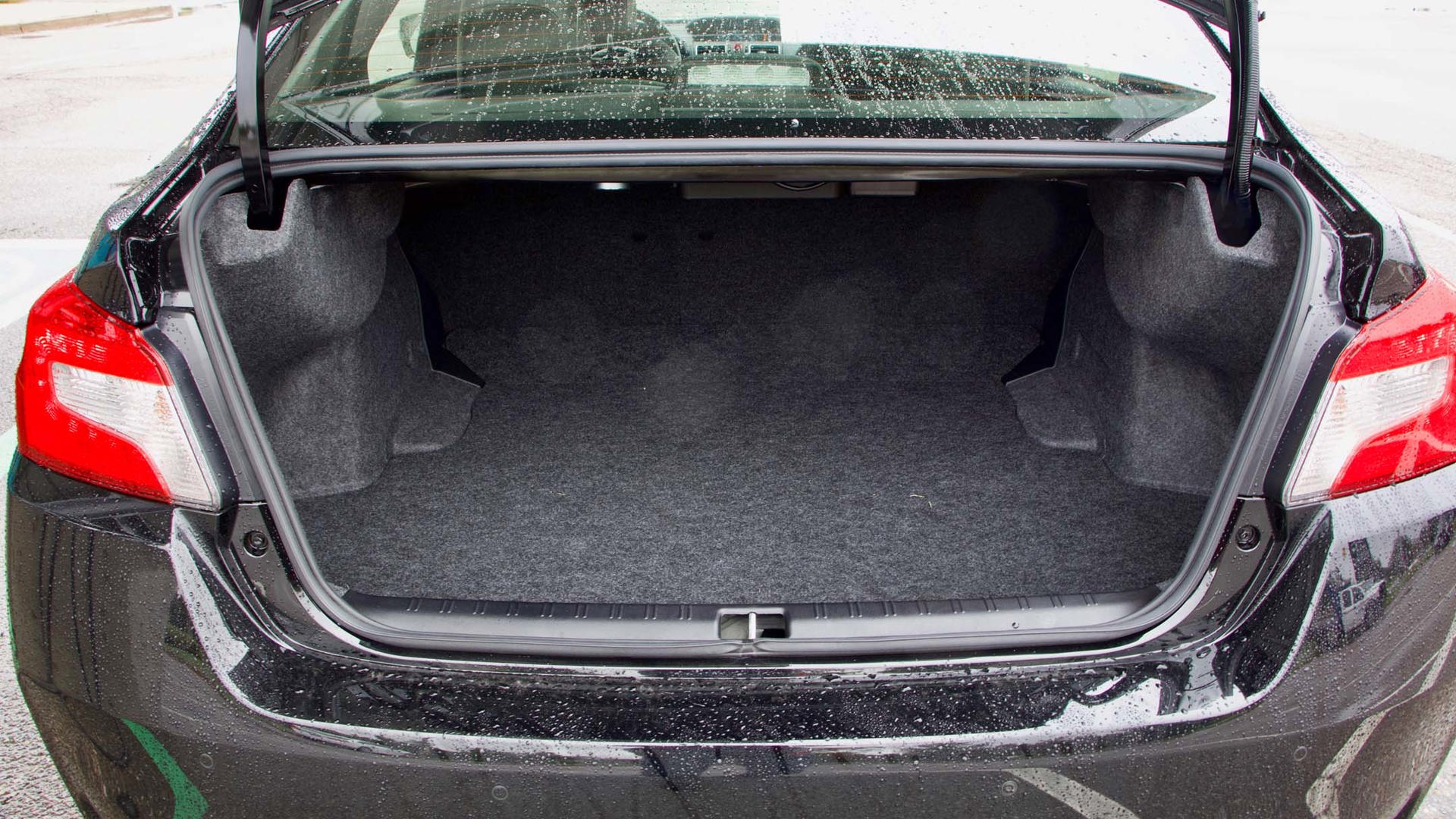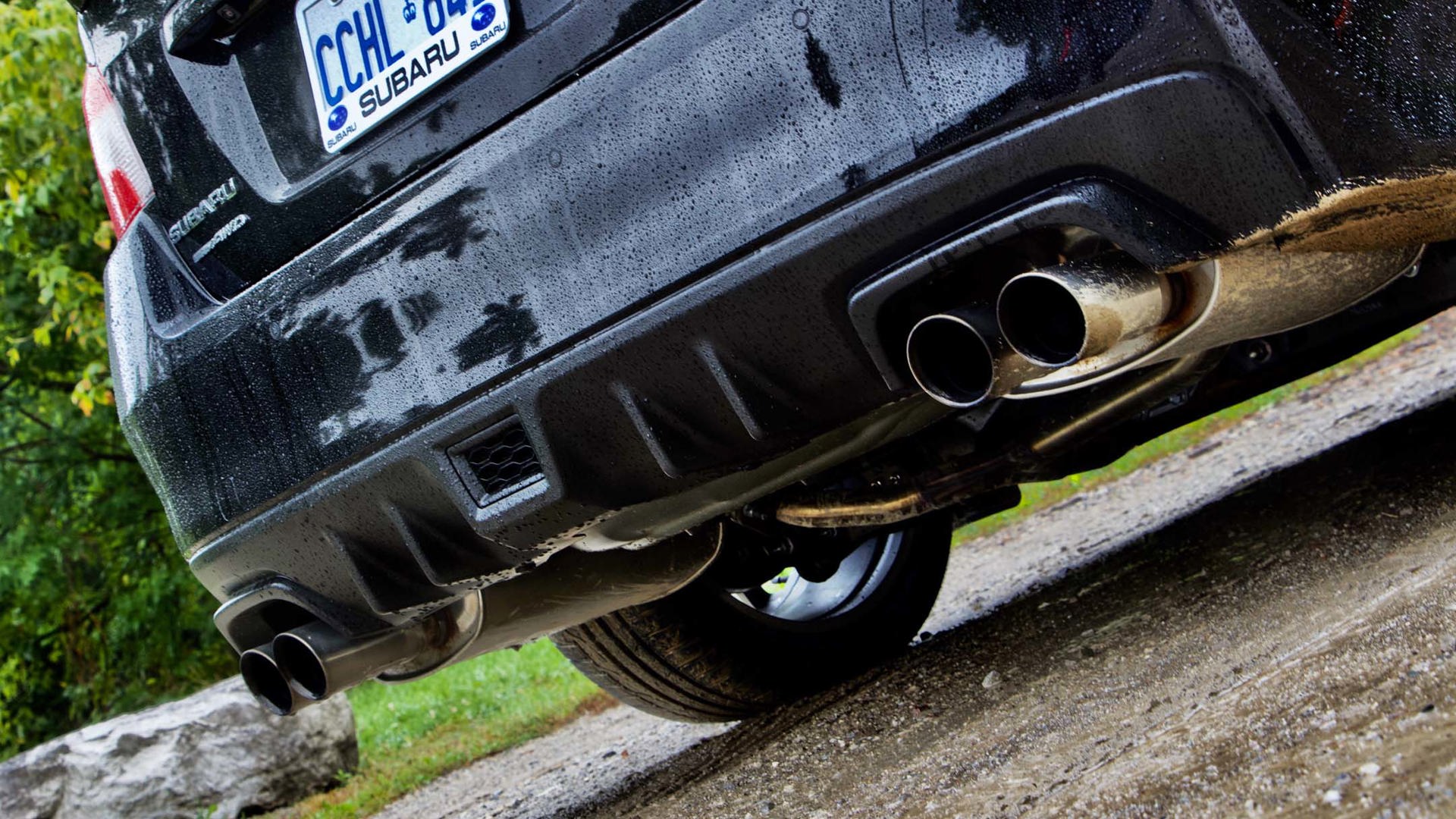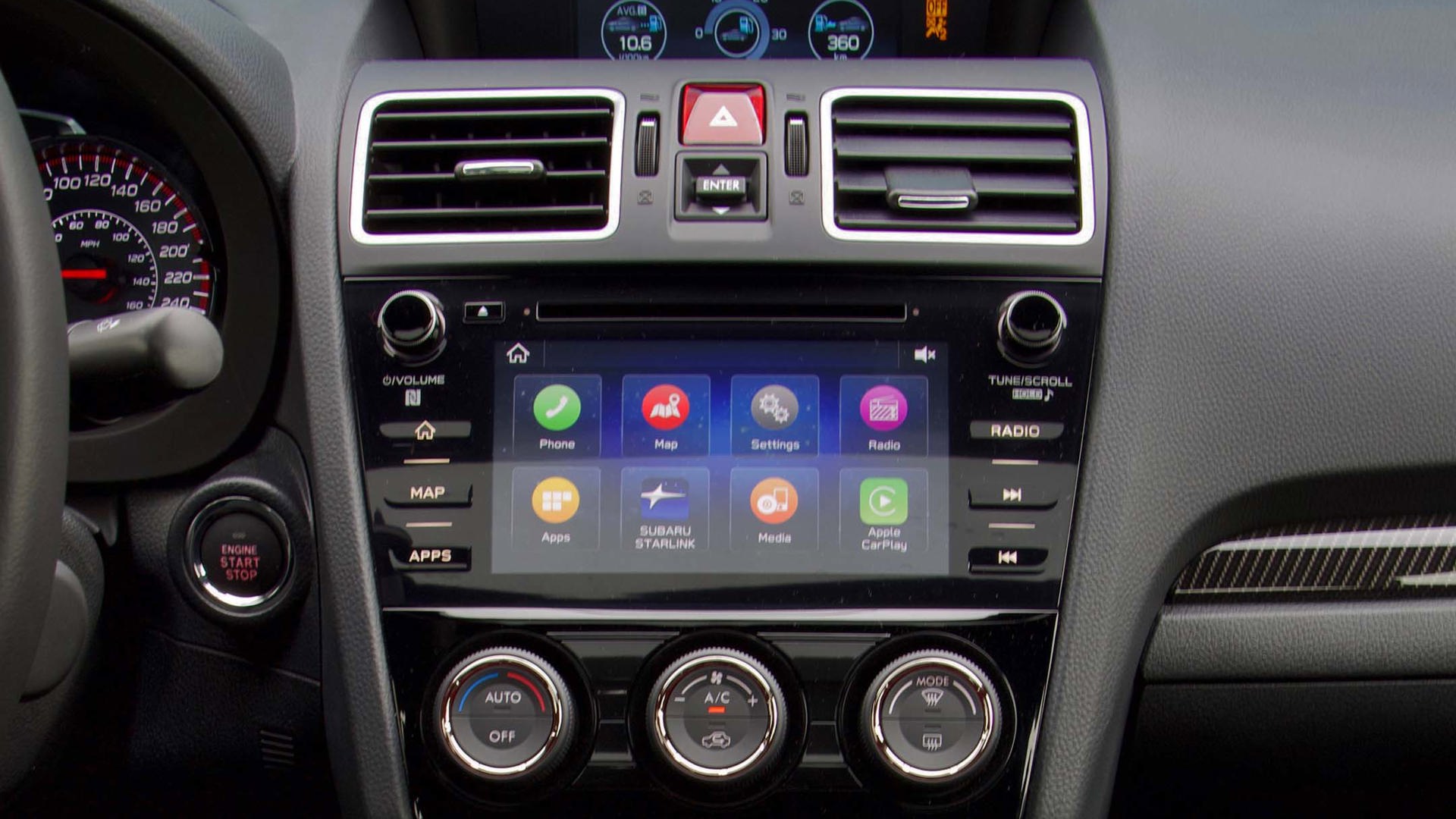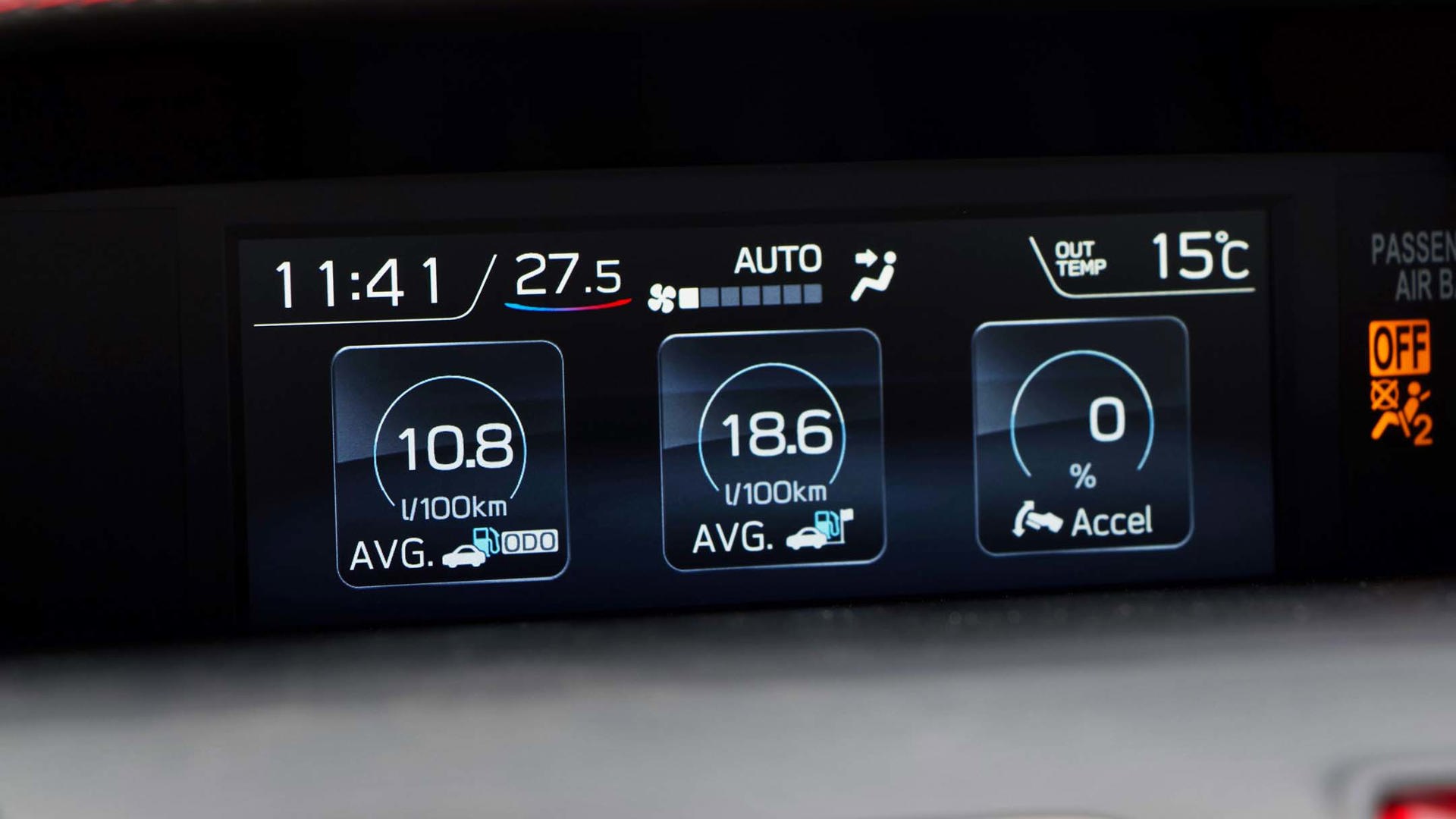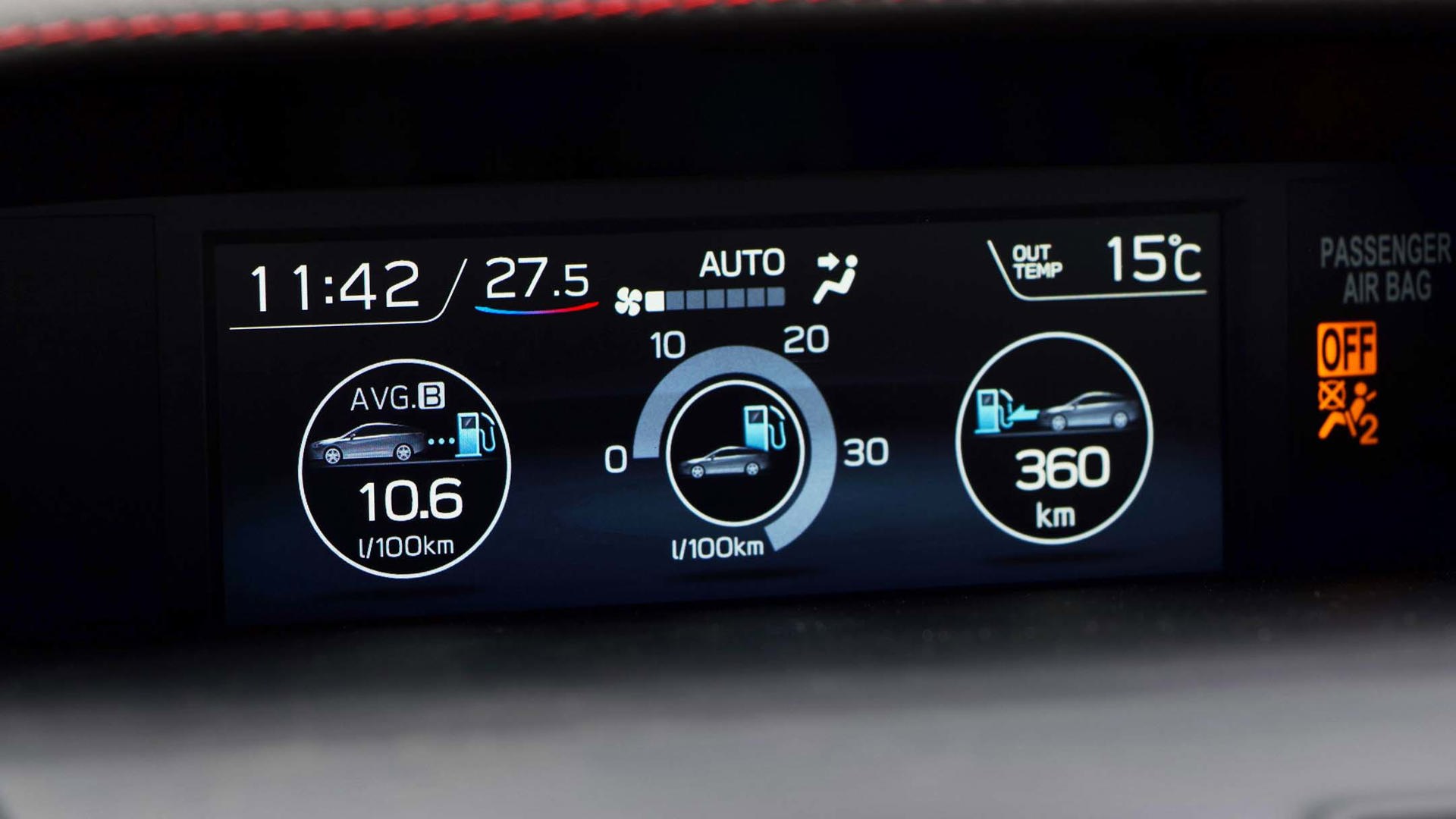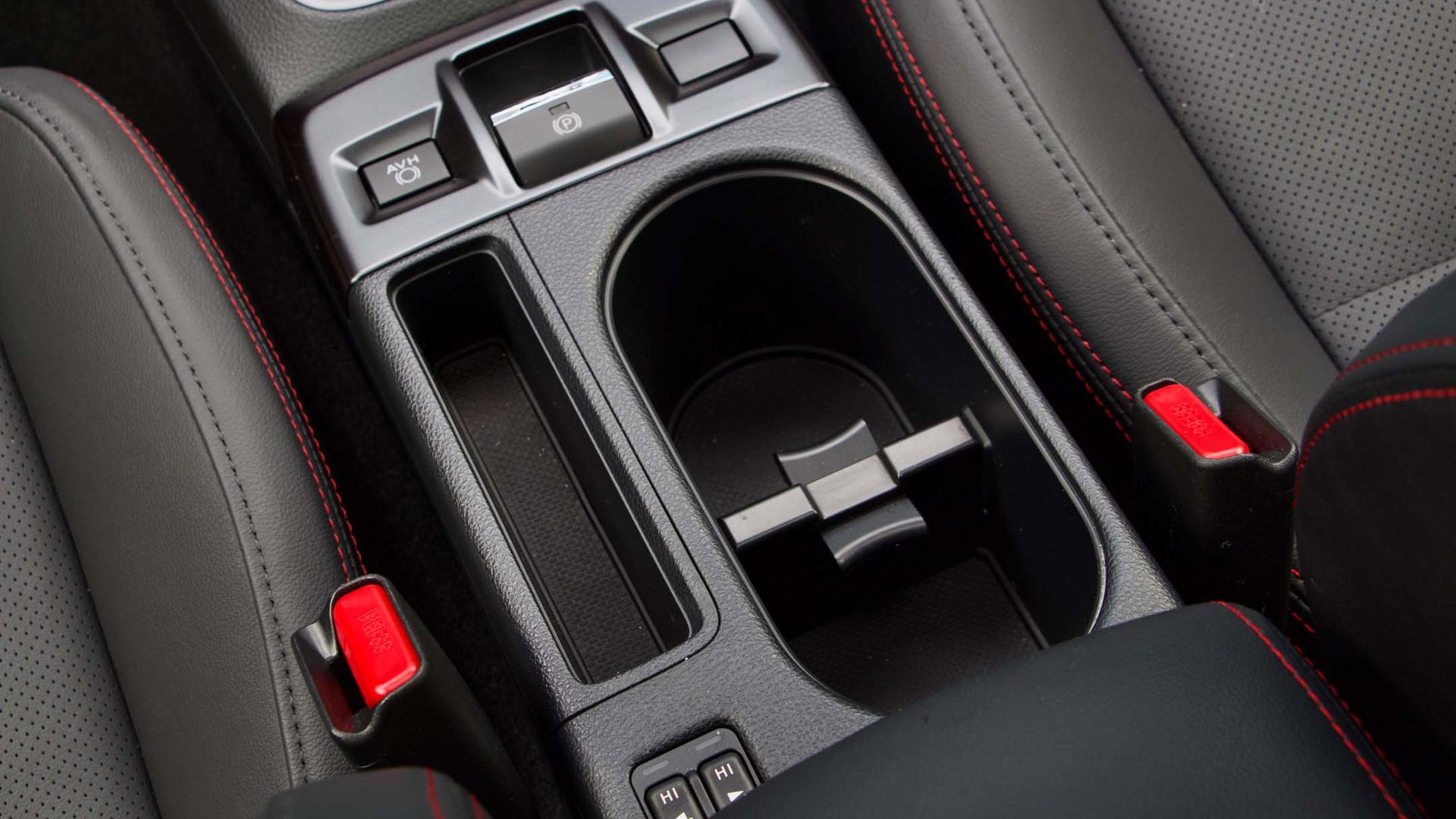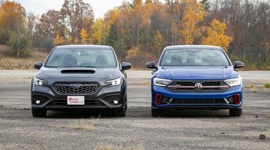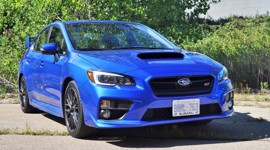 AutoTrader SCORE
AutoTrader SCORE
-
STYLING6/10
-
Safety7/10
-
PRACTICALITY6/10
-
USER-FRIENDLINESS8/10
-
FEATURES8/10
-
POWER8/10
-
COMFORT5/10
-
DRIVING FEEL9/10
-
FUEL ECONOMY6/10
-
VALUE8/10
Performance vehicles come in all shapes and sizes, and although we love to ogle the latest hypercars and test $100K sports cars barely more practical than a motorcycle like popping back our daily dose of happy pills, most people in the real world have a budget and need to use their cars for more than track days or drifting around on closed roads by professional drivers.
Plenty of performance on tap to make every drive fun, and a stiff chassis that will occasionally (okay, frequently) remind you that the speed and cornering agility is lurking and ready.
Even in the affordable realms from $30,000 to $60,000 there are coupes, convertibles, hatchbacks, sedans, rear-wheel drive, front-wheel drive, all-wheel drive, and anywhere from under 200 hp all the way up to over 400 hp. If you’re dead-set on horsepower and speed at all costs, go check out these five speed demons, all of which still ring in under $50K. Truly, it’s a great time to have money to spend on a performance car.
While extremes are all well and good, most of us don’t need track-crushing cornering capabilities or eye-watering acceleration, and finding a balance between speed, performance, and practical daily drivability is fuel for endless and infinite debate in online forums and comment sections around the internet. Let me remind you of the stereotypes for a second here: the refined but somewhat boring Volkswagen GTI, fun-loving but too-small Mini Cooper S, sublime Honda Civic Type R with eye-searing boy-racer looks, and hooligan Ford Focus ST, sadly not long for this continent.
Which finally brings me to the subject of this review, the all-season, rally-bred Subaru WRX (and its big-winged big brother STI), always respected for its power, speed, and engineering even if it sounded like a tractor, with an interior to match.
Is the 2019 Subaru WRX still something of a one-dimensional performance bargain that lags behind the competition in features and quality? Or has Subaru closed the gap on amenities and refinement without giving up its edge in performance? Yes and no. You didn’t think I was going to answer that so soon did you? But it’s not really that simple, of course.
Powertrain (and Efficiency)
For years Subaru dominated the lightweight hot hatch and sport compact arms race with well over 200 hp married to all-wheel drive, which gave it a huge traction advantage off the line. In 2009, Subaru really upped their game, jumping to 265 hp and 244 lb-ft of torque, giving it magical acceleration. When an all-new WRX launched in 2014 with an all-new platform and all-new engine, you’d think they gave it yet another level of power, right? Well, not so much. The 2015 model added a grand total of three horsepower to the WRX’s spec sheet, and it hasn’t changed since.
Okay, I’m being slightly unfair, as the change from a 2.5-litre to 2.0-litre turbocharged flat-four added a good dose of torque, all of it highly usable from 2,000 to 5,200 rpm. Now, you will read plenty of reviews crabbing about its turbo lag, and sure, if every millisecond counts, you’ll find some hesitation before the boost kicks in and you’re rolling on a wave of torque. So, if this will serve as your track car, it will be something to take note of and learn to work around, but out on the street, I found it only highlighted the surge of power and made the acceleration seem more intense during that window.
In my case, the lag was even accentuated by the optional CVT, which itself seems to pause for a fraction of a second before winding up to the right ratio when you suddenly switch to attack mode. Then again, if you go through your preflight check-downs, you’ll have S# (Sport-sharp) mode engaged and the CVT in manual mode; the responses will be, well, sharp enough for any casual sportiness or a track day. In most situations you’ll be better off leaving the transmission to sort out the ratio, and it mimics “gears” to give you a more familiar feel, but if you know the track or road well, then you can anticipate gear changes and be ready for corner exit with the paddle shifters.
When you’re not hunting curves or lap times, the CVT makes smooth work of managing torque, although you will sometimes catch a bit of a rubber-band effect by virtue of some combination of throttle response, transmission, and turbo lag. Intelligent mode, which delays throttle response, helps to reduce fuel consumption, Natural Resource Canada estimating it at 12.6 L/100 km in city driving, 9.6 on the highway, and 11.2 combined. I was impressed to see that I almost matched the combined rating with 11.0 L/100 km showing on the trip computer at the end of my week, but then I looked up its competitors’ ratings and had a good laugh.
All-wheel drive will do that to you, and the WRX version of Subaru’s Symmetrical all-wheel drive is an electronically controlled multi-plate transfer clutch, with a slight rear bias to the torque split at 45/55. However, when called uponb the system can vary torque between the axles slightly to an even 50/50 split, while a locking rear differential can balance power at the back end, and the brakes chip in with torque vectoring to offer even better behaviour when exiting corners or accelerating on poor traction surfaces. Snow or gravel anyone?
Ride and Handling
As I was getting at, the WRX’s cornering behaviour is rather spectacular. The front MacPherson strut features aluminum lower suspension arms with pillow ball mounts and bushings, and the rears are double wishbone with stabilizer bars at both ends. There’s no question the WRX remains loyal to performance over comfort and refinement, and barely leans at all no matter how much you push it on your favourite on-ramp or sweeping curves. You will start to notice a bit of lean of you really throw it into some tight twisties or take it out for an autocross, but it’s a natural progression and forms part of the feedback picture you need to get the most out of your car.
You know what’s coming next, right? Yup, the price you pay for that is a hard ride – if you don’t actually want a truly sporty car to go along with your horsepower, you might find it tiring, but every dip or bump we hit and the chattering teeth they caused only served to remind me of its capability and seemed a fair trade. Although bred from rally sport and capable on gravel roads, any washboard surfaces you may encounter will reward you with unexpected and unpleasant vibrations. Even in more mild cruising, the WRX will pick up on subtle imperfections in the road and pass them on, and while not excessively loud, the engine and exhaust aren’t the most pleasant sounding, so I was grateful for the upgraded audio system that easily drowned out the droning without stressing the speakers to the point of degraded sound quality.
Front brakes are dual-piston calipers clamping down on 316 mm ventilated discs, and the rear make do with single-piston calipers and 286 mm solid discs that barely broke a sweat on my routine. Pedal feel is good and with 245/40 R18 Dunlop SP Sport Maxx RT on the Sport-Tech’s 18-inch alloys, stopping distances felt short in dry and wet conditions.
Practicality
Partially making up for the rough ride are good compromise seats: plenty of bolstering to support when you grab the WRX by the scruff of the neck and shake it down, but they’re not overly stiff or intrusive, so they’re easy enough to get in and out of and don’t constantly remind me of how overweight I am – some seats in these sport compacts can be incredibly judgmental (yeah, I’m looking at you, Focus ST). Even the rear seats are a bit recessed to create the impression of bolstering, and the door openings are plenty wide with a relatively high roof making it easy to get into the back seat or wrestle any kids or canines into their seats back there. The rear centre position is practically a write-off, with none of the reasonable head and legroom that the two outboard seats offer.
We’ve come to that part of the WRX review that Subaru is surely sick of by now: complaining about the lack of a hatchback. I get that Subaru probably wanted to streamline their lineup and trim down their R&D costs, avoiding the additional reinforcing and tuning that would have been required for the hatchback, maybe even keeping the price in check for loyal fans. But damn, it pains me to drive such a capable, affordable little car and not have the added practicality that a hatch offers. The trunk is listed at 340 L, which is fine, but the small opening (compared to a hatch) can make every time you load groceries or gear a little more difficult, and rules out many larger loads. Plus, the trunk lid had issues opening and sounded like it was going to break if you closed it too hard, which was a further nuisance.
On the other hand, one thing that surprised me in a good way was the interior quality. While many critics give the WRX a hard time for cheap interiors, I thought the majority trended to a cabin that felt and looked good, with a soft-touch dash, good quality leather on the seats and steering wheel, and bright, clear gauges and screens. While the screens look okay, there’s something a bit out of date about the graphics, and the system is far from perfect, occasionally getting laggy when you try to quickly move through multiple menus, and one time the screen froze up, then mysteriously scrolled through a dozen satellite radio stations when I hadn’t touched anything... spooky. Maybe the WRX I drove was haunted.
Pricing & Equipment
While you don’t get that level of quality (mainly the missing leather seats and door trim) on the $31,745 base model ($29,995 before $100 A/C tax and $1,650 destination), the base model is still well equipped and the cloth seats are still heated in front, with auto climate control and a leather-wrapped multi-function steering wheel, plus you get a back-up camera to go along with excellent outward visibility in all directions, alloy pedals, and 17-inch wheels. For infotainment there’s a 6.5-inch high-resolution touchscreen, with Apple CarPlay/Android Auto smartphone integration, dual USB ports, Bluetooth connectivity and a satellite radio with a three-month free trial. Remember, all this is on top of the sizeable power advantage at that price range and all-wheel drive providing a a bit of extra security in wet and snowy conditions. Adding the CVT automatic in any of the first three trims will add $1,300 to your pre-tax total.
If the toys and gadgets are of more interest than performance, the fully loaded Elantra Sport can be had with all those options and more at just a few hundred more (at a power deficit of over 60 hp and lb-ft), and can be had in hatch or sedan form to suit your tastes. If you are interested in the performance above all else, this $30K WRX is the way to go, as only the GTI comes anywhere close to matching it in output with 220 hp and 258 lb-ft of torque, but it poses the opposite extreme, available only in FWD hatchback form and plenty fun on the road, but hardly a machine that begs to be taken to the track like the WRX.
Stepping up from the base model drives the price up rather quickly, the Sport jumping to $35,145 ($33,395 before A/C Tax and destination), adding a sunroof, power driver’s seat, blind-spot detection, lane-change assist, rear cross-traffic alert, LED fog lights, LED cornering lights, and auto headlights.
The Sport-tech gets another round of upgrades, the $38,445 ($36,695 before A/C tax and destination) bringing proximity keyless entry with push-button start, leather seating surfaces, the touchscreen grows from 6.5 to 7 inches and gains navigationb and the stereo is pumped up to a 320-watt Harman Kardon nine-speaker system with a subwoofer, and wheels go up to 18 inches with dark gunmetal finish.
From the Sport-tech you can go in two possible directions to top off your WRX – daily driver or track rat. For the shopper that is looking at it as a powerful, year-round daily driver, you can add the EyeSight package, Subaru’s state-of-the-art driver assistance system for $41,045, and that includes the CVT, the only transmission option for this package. This suite includes pre-collision braking, brake assist, and throttle management; adaptive cruise control; lane-departure warning and lane-sway warning with lane-keep assist; high-beam assist; reverse auto braking, and auto vehicle hold. This is the model we tested, and the convenience systems work well (we thankfully didn’t have to test the emergency systems), maintaining gaps in traffic smoothly, subtly correcting steering as you approach the lane lines, and responding early to slower traffic ahead.
Driver aids are all well and good for commuters, but weekend warriors will want the manual-only Sport-tech RS for virtually the same price at $40,745, but the main add-ons are leather and Ultrasuede Recaro front seats, Jurid front brake pads, and red painted calipers.
If you want something extra special, Subaru also has a manual-only Raiu Edition (“thunderstorm” in Japanese), which takes the seats and brake pads from the RS and adds an exclusive STI body kit and Grey Khaki exterior and STI short-throw shifter. However, at $42,745 you can actually save money by stepping up to the STI and its 310 hp, trick-adjustable AWD system, so you have to ask yourself just how special you need to be. Really, any of the top trims are so close in price to the STI that it’s truly choosing the conveniences of modern life over a manual-only menace that can be punishing to drive for those looking for casual performance without making any sacrifices.
Verdict
The 2019 Subaru WRX feels like a modern car through and through in Sport-tech with EyeSight trim, with all the conveniences you want for commuting and cruising, like touchscreen navigation, smartphone integration, adaptive cruise, leather seats, and automatic transmission. Underneath the sheep’s clothing is a very aggressive dog, but it’s no wolf like the STI. Still, there is plenty of performance on tap to make every drive fun, and a stiff chassis that will occasionally (okay, frequently) remind you that the speed and cornering agility is lurking and ready.
However, the same can be said of quite a few cars in this price range, and where the WRX dominates in performance at $30,000, others are more refined at $40,000, with hatchback practicality to boot, not to mention how close that price brings it to the next tier of performance like the STI, Volkswagen Golf R, and Honda Civic Type R.
Those who have eyes only for the WRX have plenty of options to choose from and aren’t missing out on much, but shoppers who want those toys plus a bit of extra power and a comfortable drive to work every morning might want to look elsewhere.
| Engine Displacement | 2.0L |
|---|---|
| Engine Cylinders | H4 |
| Peak Horsepower | 268 hp @ 5,600 rpm |
| Peak Torque | 258 lb-ft @ 2,000–5,200 rpm |
| Fuel Economy | 12.6/9.6/11.2 L/100 km cty/hwy/cmb |
| Cargo Space | 340 L |
| Model Tested | 2019 Subaru WRX Sport-tech with EyeSight |
| Base Price | $39,295 |
| A/C Tax | $100 |
| Destination Fee | $1,650 |
| Price as Tested | $41,045 |
|
Optional Equipment
None
|
|






